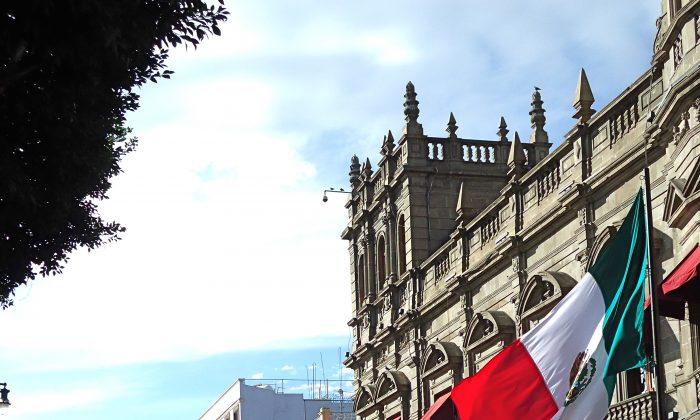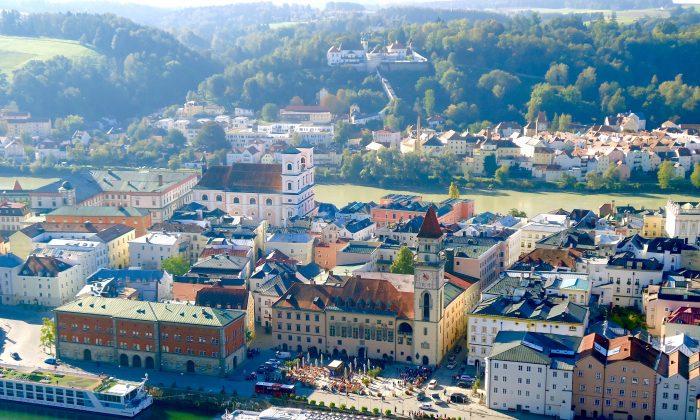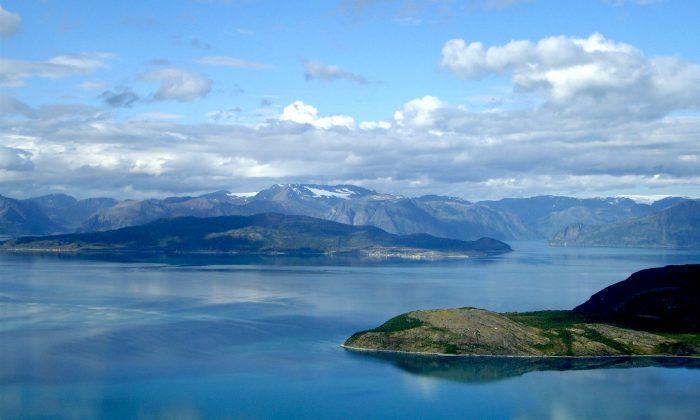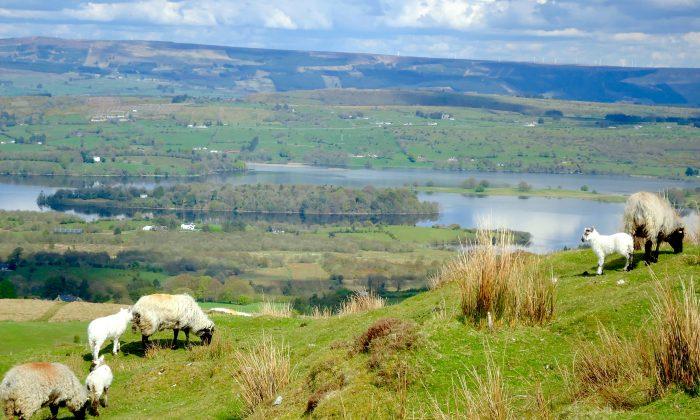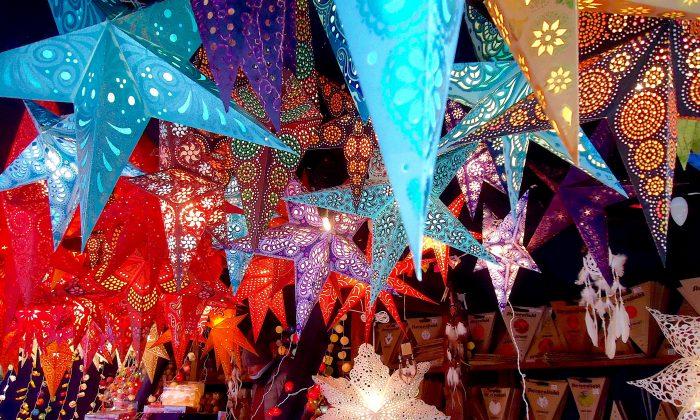Every year a great travel trade fair is held in Mexico called Tianguis Turistico, after the local name for the weekly markets that have taken place from time immemorial. This year Tianguis took place in the historic colonial town of Puebla, just an hour and a half southwest of Mexico City.
Tianguis is a time for celebrating all things Mexican. It’s a citywide fiesta of national pride, music, and dance, and a time to sample the subtle flavors of Mexico’s superb cuisine. The event gave me an opportunity to visit a place I had long wanted to see and explore the hidden corners of this quintessential Mexican city.
In 1531, after recent conquests, the Spanish needed a stopping point between their port at Veracruz and their capital of Mexico City. They founded Puebla, a place of striking contrasts and dramatic scenery. Nestled in a cluster of smoking volcanoes nearly 18,000 feet high, with unpronounceable names like Popocatepetl and Iztaccihuatl, the architecture of Puebla’s pristine Old Town, the Centro Historico, is a conversation in cultures.
Olmecs and Toltecs, Spanish, French, and Italian have all left their mark on the city. Named a UNESCO World Heritage Site in 1987, the town is laid out on a grid. Here all roads lead in straight lines to the Zocalo, the main plaza that stretches like a long green garden in front of the severe gray walls of Puebla’s massive cathedral.
It was Sunday afternoon and the people of Puebla, the Poblanos, were strolling the Zocalo and the arcaded blocks which surround it. Masses of jacaranda trees were in bloom, their lavender blossoms falling in random patterns like organic confetti. Restaurants spilled out all over the sidewalks, and clusters of bright balloons waved in the breeze near a row of impromptu shoeshine stands where men with faces like Aztec statues worked industriously on the town’s shoe leather.
Old women walked slowly, arm in arm with a son or daughter, and children played tag in fountains that sprouted up from the sidewalk. In the nearby Episcopal Palace, once home to an archbishop, girls dressed as pre-Colombian dancers entertained an enthusiastic crowd. I wondered what the austere Spanish archbishop who had lived here would have thought of the pre-colonial traditions he’d tried so hard to destroy, being resurrected in his own courtyard.
Next door was his library, an elegant room of 18th century tile and brick with oiled cedar doors carved in Moorish motifs. The oldest book here dates to 1493, the year following the arrival of Columbus in the New World.
Walking past square, sherbet-colored houses decorated with iron balconies and white plaster swirls, every nook and cranny held a quesadilla stall or an orange juice vendor. Every courtyard offered tables set for lunch.
Mexico’s favorite roasted treats were also for sale, cacahuates and chapulines—peanuts and grasshoppers respectively. Both were crunchy and when topped with salt, chili powder, and a squeeze of lime juice tasted quite similar.
I stopped for a glass of fresh orange juice and waited while a local woman placed her order. When I pulled out my camera, she laughed and told the vendor to “pull harder. Show your muscles.”
In another crack between two buildings, a young woman rolled masa harina (cornmeal) into fresh tortillas as mushrooms and onions sizzled on a griddle beside her.
In Puebla you are never very far from food or from churches. The conquering Spanish sought to dazzle their new subjects with the lavishness of European baroque architecture. Everywhere you look, intricate carvings, brilliant tiles, and extravagant displays of gold highlight the churches and chapels.
The floor and altar of 17th-century Santo Domingo Church on 5 de Mayo Street are crafted from slabs of translucent onyx and the entire ceiling of the church’s Chapel of the Rosary is picked out in gold leaf.
But while the Spanish believed they were conquering the minds and collecting the souls of the inhabitants, the locals were secretly subverting their message. At the spectacular church of Santa Maria Tonantzintla, named for both the Christian Virgin and the Aztec mother goddess Tonantzin, the Mexicans who created its elaborate reredos under the watchful eyes of Spanish priests tucked among the masses of saints and angels the figures of Aztec gods, Quetzalcoatl, the feathered serpent, and Tlaloc, the god of rain.
Nowhere is the battle between the old and the new, invader and invaded more apparent than in the town of Cholula, now a suburb of Puebla. Here stands the largest pyramid in the world, originally dedicated to Quetzalcoatl. As I looked for the entrance, an eerie reminder of the past suddenly appeared. A procession of locals in historic dress, hedged by shamans blowing conch shells and waving incense.
I took my place in line behind a large group of people buying tickets and entered the passageway through the heart of the pyramid. Nearly five miles of tunnels excavated by exploring archaeologists punctuate the pyramid’s base. Here the explorers found murals of grasshoppers and pulque drinkers, painted pottery, intricately carved statues, and the Tomb of the Sculpted Skulls. Once in the tunnel with an endless line of people fore and aft—there was no way back.
“I hope no one has claustrophobia,” a helpful voice shouted in front of me. Nervous laughs echoed off the walls as people began to walk faster. It got very hot. Was the air getting thinner?
After what seemed hours, we came out into the sunshine with dozens of steps still to climb to the very top. Here the Spanish had leveled the original temples and built a church as a symbol of victory. Lightning destroyed two crosses placed on the site and in a reluctant gesture to reality, the church was built like a fortress, perhaps a sign that the Spanish realized they were treading on treacherous ground.
They dedicated their new church to the Virgin shown with a crescent moon, which the locals interpreted as a Spanish form of the great Aztec lunar goddess Coyolzauhqui. The view from the top across the valley of Puebla toward the snow-covered volcano of Iztaccihuatl was breathtaking. As I sat in the shade, a man came up and introduced himself as Ricardo.
He asked me where I was from and when I told him California, he grinned and asked if I knew the town of Santa Monica.
“It is very beautiful,” he said. “The sea there is very beautiful.”
I thought it strange that a man who lived surrounded by pyramids and volcanoes should be telling me how beautiful the sea was in Santa Monica.
Down off the pyramid, people were posing for photos beside the surviving statues, stairs, and courts of the pre-Columbian remains. In an instance of Mexican multiculturalism, a young couple was teaching their children to read the signs in English.
Downhill the market was in full swing with a brilliantly colored collection of tchotchkes for sale. Drink sellers offered beverages from iced containers labeled “Money” and “Angel’s Kiss.”
A bullring sat silently nearby. At the end of the market, a pole had been erected and costumed men were climbing to the top.
“What are they doing?” I asked a photographer who was setting up nearby.
“They are flyers, voladores,” he told me, and explained that the men were performing what was once a sacred aerial ceremony.
To the sound of conch shells, drums, and flutes, the voladores attached themselves to a wheel at the top of the pole by ropes around their ankles. They wound the ropes tightly around the wheel’s axel and then launched themselves into space, spinning round and round until they reached the ground.
On the way back to the city center, the sun was setting behind the snow cone of Popocatepetl.
Like the voladores swirling around their pole, a wreath of smoke wound like a lasso in the air above it. As with everything else in Puebla, it was unexpected, memorable, and breathtaking.
Susan James is a freelance writer based in Los Angeles. She has lived in India, the U.K., and Hawaii, and writes about travel, art, and culture.

